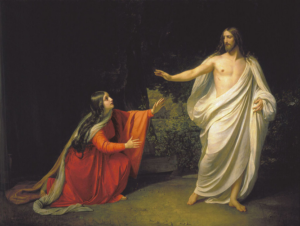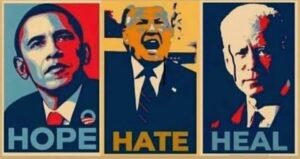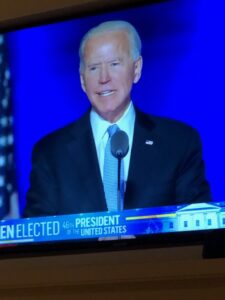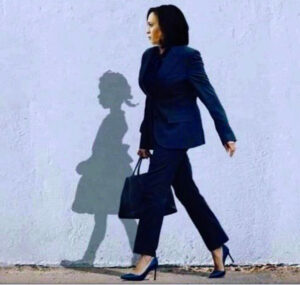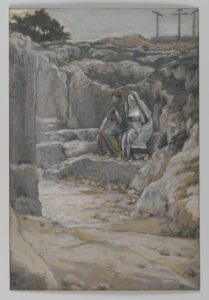James Martin
Mary of Magdala
July 22, 2021‘…the first great bough, the fruit of love & compassion, the foundation of all things.’ -Mary Magdalene ღ
Today, the feast day of St. Mary Magdalene.
Today is the feast day of St. Mary Magdalene, one of the most misunderstood of all saints. In this excerpt from A Jesuit Off-Broadway, I relate her (true) tale and how her life intersected with that of the gifted actress who would portray her in the play “The Last Days of Judas Iscariot.”
America/The Jesuit Review
Who was Mary of Magdala?
by James Martin, S.J.
One of the note cards from the cathedral gift shop in Los Angeles struck a chord with the actress Yetta Gottesman, because it depicted her character, Mary Magdalene. The delicate tapestry presented a young woman with close-cropped black hair, her head bowed in prayer, her hands clasped to her chin.
Thanks in great part to Dan Brown’s best-selling novel The Da Vinci Code, interest in the historical Mary Magdalene has risen stratospherically during the past few years. As with her fellow disciple, Judas, we know very little about her. Jesus cast seven demons out of her (we don’t know how these demons had manifested themselves in her behavior); she remained at the cross with two other women when the other (male) disciples had all fled; she watched Jesus die; and she was the first one to whom Jesus appeared after the Resurrection. In a touching scene on Easter morning, a grieving Mary initially mistakes the risen Jesus for the local gardener.
Even with these distinguished credentials, Mary Magdalene (the name means “of Magdala,” a town in Galilee) gradually became known as a prostitute, though there is no mention of this in the Gospels. (The word maudlin comes from her name, presumably the result of her grieving for a sinful past.) The most benign explanation for this confusion over Mary’s identity is that there is a veritable crowd of Marys in the Gospel stories (besides Mary, the mother of Jesus, there is Mary of Bethany and Mary, the wife of Clopas). Mary Magdalene was also, oddly, conflated with a woman who had bathed Jesus’ feet with her tears, dried them with her hair, and then anointed them with oil. In AD 591, Pope Gregory I preached a sermon in which he proclaimed, “She whom Luke calls the sinful woman, whom John calls Mary, we believe to be the Mary from whom seven devils were ejected according to Mark.”
This inaccurate identification became more or less church teaching for at least a millennium.
A less benign interpretation of this “confusion” is that the early church was threatened, even horrified, by the stunning example of a woman among the early disciples. Strictly based on the evidence in the Gospels, Mary Magdalene enjoyed an exalted standing. She was not only the first one to whom Jesus appeared after the Resurrection, but also the one who proclaimed the news of his resurrection to the other disciples, including those who would be the leaders of the early church communities: Peter, James, Andrew, and the rest.
Thus comes Mary’s traditional title: “Apostle to the Apostles.” Her fidelity to Jesus during the Crucifixion, as well as Jesus’ appearance to her, are marks of distinction that place her, at least in terms of her faith, above the men. Some of the “extracanonical,” or “apocryphal,” gospels (that is, those not included by the early church councils with the traditional four Gospels) picture her as the most favored of all the disciples. “[Christ loved] her more than all the disciples,” says the text known as The Gospel of Philip.
Full read:
https://www.americamagazine.org/faith/2011/07/22/who-was-mary-magdala
[Image: Thomas Merton]
Cynthia Bourgeault:
“Mary Magdalene belongs to the great worldwide stream of spiritual awakening and has nothing whatsoever to do with organized religion.
If we are serious about activating Mary Magdalene’s wisdom presence within contemporary Christianity, the first step is to increase her visibility within the liturgy, particularly during Holy Week, where her presence is so crucial to understanding the Paschal Mystery as an act of redeeming ℒℴve.
I would like to see the entire Holy Week liturgy reframed around two parallel anointings…at Bethany and in the garden of the resurrection…which so powerfully convey the energy of transformative love.
Early Easter morning ceremonially enacted, rather than merely read, the gospel account of Mary Magdalene’s visit to the tomb. The basic ceremony, the Visitatio Sepulchri, has been around since the tenth century; it merely needs to be returned to active duty.
Mary Magdalene weaves into one whole cloth those strands that have traditionally been kept so stringently separated: conscious ℒℴve, healing, kenotic surrender, the feminine, singleness, transformation. To touch any part of the this hologram is to invoke all the rest.
We do not know for certain what happened to Mary Magdalene after the resurrection. The gospel bearing her name confirms that her spiritual leadership was honored in a least some circles of early Christianity. She may well have sojourned in France. What we do know for certain is that the fragrance of her presence did not disappear from Christianity. In mysticism and allegory, in art and folklore, in esoteric circles…all veiled, but pointing like a finger at the moon…her mysterious alchemical feminine was kept alive. Now at last, in our own times, it comes above ground again, asking us to awaken yet again to the morning of the resurrection and find ourselves in the garden, awaiting the encounter that can change our institutional hearts.
The imaginal realm is real, and through it you will never be separated from any one or anything you have ever loved, for ℒℴve is the ground in which you live and and move and have your being. This is the message that Mary Magdalene has perennially to bring. This is the message we most need to hear.”
‘In 591 Pope Gregory claimed that Mary of Magdala was a prostitute, a misconception that remains to this day. In 2016 she was named by the Vatican as the apostle of the apostles, their equal.’
-Written by Helen Edmundson and Philippa Goslett. Directed by Garth Davis.
https://www.rogerebert.com/reviews/mary-magdalene-2019
“As someone who watched it twice in 24 hours, ‘Mary Magdalene’ moved me in a way that no previous film about Christianity ever has.
Mary finds a place in the world and a cause in which to place her profound empathy. She was not just any spectator, this telling argues, so much as proof that at the core of Jesus’ teachings is a feminine influence.” -Nick Allen
[Must see.]
Heal. And unite.
November 8, 2020

And then, may we heal.
-dayle
From Joe Biden, the 46th President of the United States:
“For all those of you who voted for President Trump, I understand the disappointment tonight. I’ve lost a couple of times myself. But now, let’s give each other a chance. It’s time to put away the harsh rhetoric, lower the temperature, see each other again, listen to each other again. And to make progress we have to stop treating our opponents as enemies.”
Alluding to scripture, he added: “This is the time to heal in America.”
From the Vice-President Elect, Kamala Harris, the first woman, a woman of color, Black and Southern Asian woman, to be elected to this office.
“Protecting our democracy takes struggle. It takes sacrifice. But there is joy in it. And there is progress. Because we, the people, have the power to build a better future.”
We The People
For those who voted, again, for the current president, please answer, ‘Why’? What did he do for you? During a pandemic? Employment? Opportunity? Fairness? Equality? Or, is it deeper? Fear? Nationalism? Culture? Bias? Concerns over race? Majorities? Disinformation? Social media platforms?
- Truth.
- Faith.
- Clarity.
- Compassion.
- Empathy.
May we heal. And unite. Not half of us…all of us. We. The. People.
W.E.B. Du Bois:
Strive for that greatness of spirit that measure life not by its disappointments, but by its possibilities.
Desmond Tutu:
My humanity is bound up in yours, for we can only be human together.
The collective heart of humankind’s suffering.
Thomas Merton:
The whole idea of compassion is based on a keen awareness of the interdependence of all these living beings, which are all part of one another and all involved in one another.
Friends,
Today, we celebrate our democracy, our common humanity, and a glass ceiling shattered once and for all.
With nearly 160 million votes cast, Joe Biden and Kamala Harris have won a decisive victory. They received more than 75 million votes, a greater number than any ticket in history, with a remarkable breadth of support from across the nation.
And they shattered several glass ceilings—it will be a joy to watch Vice President-elect Kamala inspire generations of future leaders and active citizens!
Across the Collective, we have seen so many give so much over these past four years, using a range of tools to fight for justice, equality, and our democracy. I am thankful and full of admiration.
We now have the opportunity to work for the systemic solutions we know we need—solutions that can remake the calcified systems in our country, from immigration and education to race and reconciliation, criminal justice and climate. And it will require each of us to bring spirit of ingenuity and hard work to support and accelerate America’s rebuilding and renewal.
We will let out the breath we have been holding in for so long. As celebratory as we feel, we also know that much work lies ahead—the work of healing the wounds and repairing the breaches.
So, we will get to work, and usher in the America we know is possible.
With relief and gratitude,
Laurene, Emerson Collective
Empathy + Sympahty = Compassion
We are a progressive being.
There is nothing at a standstill in nature.
Only God is motionless for (S)He was, is and will be the same yesterday,
today and tomorrow,
and yet, is ever moving.
-Mahatma Gandhi
I will never understand how 70,000,000+ people could vote for him again. Never. Perhaps, maybe, hopefully, some will evolve to understand his destructive and immoral behaviors. He has shown us who he is for decades. Some of us (me) gave him no mind. And then, he was elected to serve. He did not serve. He lied. He divided. And he hated. Hate is born of fear. What was feared?
Perhaps, we have always been this divided, but the ugly part was given platform and verbalized. Democracy, we have learned, is not passive, but active. We can not simply turn out the vote every two, or four years.
We must edify and protect the marginalized and oppressed. The government serves us, we don’t serve it.
A true democracy is messy and necessary. And it requires ‘good trouble.’
Now, let’s work to balance the scales and bring Jon Ossoff and Rev. Raphael Warnock to the U.S. Senate in Georgia. The shadow president, Senator Mitch McConnell, will continue to strangle democracy and refuse to move policy forward if we do not achieve balance. Please donate or volunteer:
electjon.com warnockforgeorgia.com
James Martin, SJ:
It is, and always has been, possible to speak respectfully about someone with whom you disagree. Here’s how: “Though we have political differences, I know Joe Biden to be a good man who has won his opportunity to lead and unify our country.”
Krista Tippett, journalist and author:
What is the story of “us”? How do we learn it, how do we tell it, and how to shift it, across dehumanizing divides, in enduring ways?
Padraig O’ Tuama, poet:
In all the waiting of your week — for results from elections, for different news, for finality, for certitude — the work of the past is calling for attention. A new future will only be built on courageous moments, and those are happening now, and now and now. In the waiting, we are with you, considering history, paradise and conflict, considering how these patterns of time are inviting us to new actions.
U
N
I
T
E
On Being:
What do you notice about how you behave in times of conflict? Do you tend toward avoidance? Or compromise? Or collaboration? Or competition? Or accommodation?
This poem describes a conflict between neighbors: a tree hangs over a fence. The owners love this tree; their neighbors don’t. Somebody responds directly, somebody else avoids, a chainsaw appears. Suddenly this conflict becomes a parable for all conflicts, illustrating how deep they can go and how often they cannot be resolved with a question about what to do.
‘Conflict is not two sides, but many sides.
What is the definition of love between conflict?’
Will we learn how to listen to each other again; we are not enemies–we are merely opponents. We have more in common than we know, or perhaps, are willing to admit. .d
Between silence.
April 20, 2019‘Words stand between silence and silence: between the silence of things and the silence of our own being. Between the silence of the world and the silence of god.’
-Thomas Merton, Thoughts in Solitude
Some days are indeed times of great pain and some are of great joy, but most are…in between. Most are, in fact, times of waiting, as the disciples waited during Holy Saturday. We’re waiting. Waiting to get into a good school. Waiting to meet the right person. Waiting to get pregnant. Waiting to get a job. Waiting for things at work to improve Waiting for diagnosis from the doctor. Waiting for life just to get better.
And there is,
is an active waiting; it knows that, even in the worst of situations, even in the darkest times, God is at work.
And to look carefully for signs of the new life that are always right around the corner–just like they were on Holy Saturday.
-James Martin, Jesuit priest
https://www.americamagazine.org/content/all-things/we-live-holy-saturday
I am not attempting, O Lord, to penetrate your loftiness,
for I cannot begin to match my understanding with it,
but I desire in some measure to understand your truth,
which my heart believes and loves.
For I do not seek to understand in order that I may believe,
but I believe in order to understand.
For this too I believe,
that “unless I believe, I shall not understand.” ([Isaiah 7:9)
-Anselm of Canterbury
